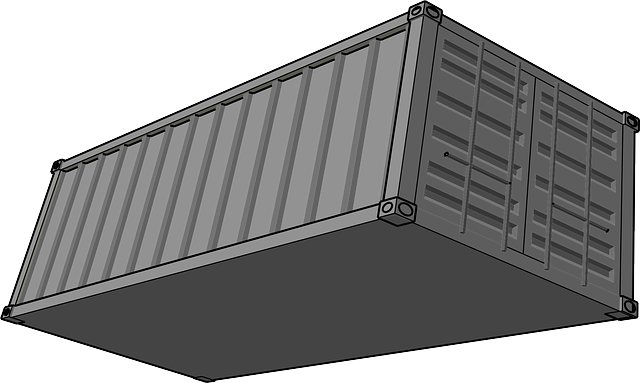Many organizations with large fleets struggle with complex claims processing due to insurance policy intricacies, regulatory compliance, and high claim volumes. The mobile nature of fleet employees exacerbates these issues. Effective fleet employee coverage requires a robust claims system that addresses fairness, accuracy, and timeliness. Inadequate coverage leads to delays, increased costs, and distress for employers and employees. To enhance efficiency, organizations should adopt technology-driven solutions like automated processing systems, mobile apps, advanced analytics, and proactive risk management, ensuring streamlined, accurate, and responsive fleet employee coverage claims management.
In the dynamic landscape of transportation, efficient claims processing for fleet employees is paramount. Yet, navigating complex policies, diverse vehicle types, and varied employment scenarios presents significant challenges. This article delves into the intricacies of fleet employee coverage, exploring common hurdles in claims handling, highlighting the profound impact of inadequate coverage, and unveiling strategic solutions to enhance accuracy and efficiency. We also examine the transformative role of technology in streamlining these processes.
Understanding Common Challenges in Fleet Employee Claims Processing

Many organizations with large fleets face significant challenges in claims processing for their employees, often stemming from unique aspects of fleet operations. These include complex insurance policies tailored to cover various types of vehicles and drivers, along with regulatory compliance issues across different jurisdictions. The sheer volume of claims, involving everything from accidents to maintenance expenses, can overwhelm existing processes, leading to delays and potential errors.
Moreover, the mobile nature of fleet employees adds another layer of complexity. Real-time communication and efficient tracking systems are crucial for swift claim management, as quick response times can significantly impact settlement outcomes and employee satisfaction. Effective fleet employee coverage demands a sophisticated claims processing system that adapts to these challenges, ensuring fairness, accuracy, and timely resolution for all parties involved.
The Impact of Inadequate Coverage on Claims Management

Inadequate fleet employee coverage can significantly impact claims management, leading to delays and increased costs for both employers and employees. When workers are not properly covered, it becomes challenging to process claims swiftly, as insurance providers may deny or complicate claims based on policy exclusions or loopholes. This can result in prolonged periods of uncertainty for employees who rely on timely compensation for their medical expenses, lost wages, or vehicle repairs following an accident.
Furthermore, insufficient coverage can leave fleet employees vulnerable during unforeseen events. For instance, if a worker sustains an injury while on duty but their policy does not adequately cover such incidents, they might face financial strain and struggle to access the necessary support and benefits. This highlights the critical need for comprehensive fleet employee coverage to ensure efficient claims management and protect the well-being of those who contribute to the smooth operation of commercial fleets.
Strategies to Enhance Efficiency and Accuracy in Claims Handling

To enhance efficiency and accuracy in claims handling for fleet employee coverage, organizations should adopt technology-driven solutions. Digitalization plays a pivotal role in streamlining the process by automating initial claim submissions, enabling faster data capture, and reducing human error. Implementing advanced analytics can help identify patterns in claims trends, predict potential issues, and optimize resource allocation.
Additionally, fostering a culture of proactive risk management among fleet employees is essential. Regular training sessions on safety protocols, vehicle maintenance practices, and incident reporting procedures can significantly reduce the frequency and severity of claims. Real-time tracking systems and telematics data provide valuable insights into driver behavior, helping identify high-risk areas and implement targeted mitigation strategies.
Technology's Role in Streamlining Fleet Employee Coverage Claims

In today’s digital era, technology plays a pivotal role in streamlining fleet employee coverage claims. Innovative solutions like automated claim processing systems and mobile applications are revolutionizing how companies manage these requests. These tools enable efficient tracking of expenses, real-time updates on claim statuses, and seamless communication between employees and administrators. By automating repetitive tasks, technology reduces manual errors and accelerates the overall claims process, ensuring fleet employees receive their benefits promptly.
Moreover, digital platforms often incorporate advanced analytics to identify patterns in claims data, predict potential issues, and proactively address them. This proactive approach not only enhances the employee experience but also helps organizations optimize their coverage policies. As a result, technology isn’t just simplifying claims processing; it’s transforming it into a more transparent, effective, and responsive process for fleet employees.
In addressing challenges in claims processing for fleet employees, understanding common hurdles, recognizing the impact of inadequate coverage, and adopting efficient strategies are key. Integrating technology plays a pivotal role in streamlining fleet employee coverage claims, enhancing accuracy, and ultimately improving overall satisfaction. By leveraging digital solutions, businesses can navigate these complexities more effectively, ensuring a smoother process for both employers and employees alike.
